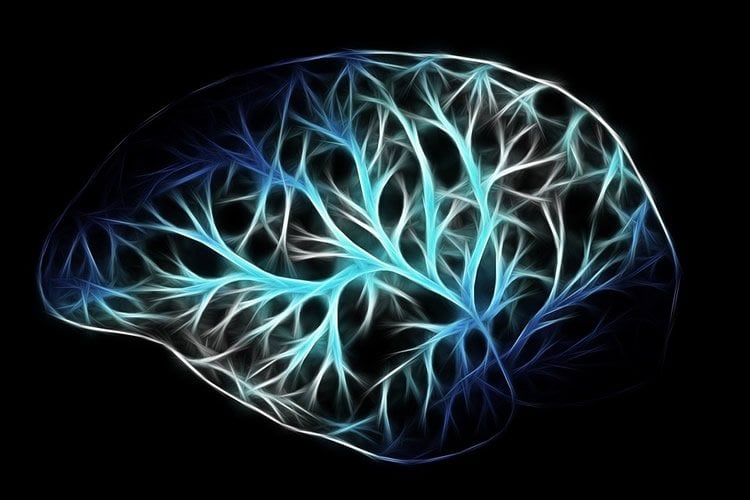Summary: A new brain mapping study reveals smokers could be predisposed to their addiction due to the molecular make up of their brains.
Source: University of Edinburgh.
Smokers may be predisposed to their habit because of the molecular make-up of their brain, research suggests.
The finding comes from a new brain map that helps explain why certain behaviours are linked with particular areas of the brain.
Connection points
Experts analysed the molecules produced at connection points between nerve cells – called synapses – which are key to sending messages around the brain.
These molecules play a critical role in controlling different aspects of behaviour. Understanding them can shed light on the functions of a particular region of the brain.
Molecular map
The team, based at the University of Edinburgh, found the pattern of molecules varied between areas of the brain.
These differences correspond to functions – such as language, emotion and memory.
Researchers say analysing the molecular make-up of synapses in this way provides a snapshot of the genes that are expressed in different areas of the brain.
Smoking link
Using their new map, they were able to investigate where genes that have been linked to smoking exert their influences on the brain.
The findings pinpointed the same region that has previously been identified in brain imaging studies.
Powerful tool
The team says this confirms that their map can bridge the gap between genetic studies and findings from brain imaging to help to explain how the brain works.
They say the new map provides a powerful tool for investigating how diseases affect different parts of the brain. The researchers have made all of their data available to facilitate such research.

“This is an important step toward understanding the molecular basis of human thought.” Said Professor Seth Grant, from the Centre for Clinical Brain Sciences.
Brain Bank
The study was based on post mortem brain tissue samples from healthy people held in the Medical Research Council’s Edinburgh Brain Bank. It is published in Nature Neuroscience and was funded by the MRC and the European Union.
“This innovative study enriches our understanding of the human brain through its use of samples from the Medical Research Council’s Edinburgh Brain Bank. The information that Professor Grant and his team has generated provide an excellent opportunity for researchers to gain further insight into how the brain works.” Dr Kate Adcock,
Head of Neurosciences & Mental Health, Medical Research Council said.
Study coauthors are Jing L. Guo, Jennifer D. McBride, Sneha Narasimhan, Hyesung Kim, Lakshmi Changolkar, Bin Zhang, Ronald J. Gathagan, Cuiyong Yue, Christopher Dengler, Anna Stieber, Magdalena Nitla, Douglas A. Coulter, Ted Abel, Kurt R. Brunden, and John Q. Trojanowski.
Funding: This study was funded by the National Institute on Aging, part of the National Institutes of Health (P30AG10125, P01AG17586, P01AG017628).
Source: Karen Kreeger – University of Edinburgh
Publisher: Organized by NeuroscienceNews.com.
Image Source: NeuroscienceNews.com image is in the public domain.
Original Research: Abstract for “Proteomic analysis of postsynaptic proteins in regions of the human neocortex” by Marcia Roy, Oksana Sorokina, Nathan Skene, Clémence Simonnet, Francesca Mazzo, Ruud Zwart, Emanuele Sher, Colin Smith, J. Douglas Armstrong & Seth G. N. Grant in Nature Neuroscience. Published online December 4 2017 doi:10.1038/s41593-017-0025-9
[cbtabs][cbtab title=”MLA”]University of Edinburgh “Brain Map Sheds Light on Smokers’ Habit.” NeuroscienceNews. NeuroscienceNews, 5 December 2017.
<https://neurosciencenews.com/smokers-brain-map-8112/>.[/cbtab][cbtab title=”APA”]University of Edinburgh (2017, December 5). Brain Map Sheds Light on Smokers’ Habit. NeuroscienceNews. Retrieved December 5, 2017 from https://neurosciencenews.com/smokers-brain-map-8112/[/cbtab][cbtab title=”Chicago”]University of Edinburgh “Brain Map Sheds Light on Smokers’ Habit.” https://neurosciencenews.com/smokers-brain-map-8112/ (accessed December 5, 2017).[/cbtab][/cbtabs]
Abstract
Proteomic analysis of postsynaptic proteins in regions of the human neocortex
The postsynaptic proteome of excitatory synapses comprises ~1,000 highly conserved proteins that control the behavioral repertoire, and mutations disrupting their function cause >130 brain diseases. Here, we document the composition of postsynaptic proteomes in human neocortical regions and integrate it with genetic, functional and structural magnetic resonance imaging, positron emission tomography imaging, and behavioral data. Neocortical regions show signatures of expression of individual proteins, protein complexes, biochemical and metabolic pathways. We characterized the compositional signatures in brain regions involved with language, emotion and memory functions. Integrating large-scale GWAS with regional proteome data identifies the same cortical region for smoking behavior as found with fMRI data. The neocortical postsynaptic proteome data resource can be used to link genetics to brain imaging and behavior, and to study the role of postsynaptic proteins in localization of brain functions.
“Proteomic analysis of postsynaptic proteins in regions of the human neocortex” by Marcia Roy, Oksana Sorokina, Nathan Skene, Clémence Simonnet, Francesca Mazzo, Ruud Zwart, Emanuele Sher, Colin Smith, J. Douglas Armstrong & Seth G. N. Grant in Nature Neuroscience. Published online December 4 2017 doi:10.1038/s41593-017-0025-9






